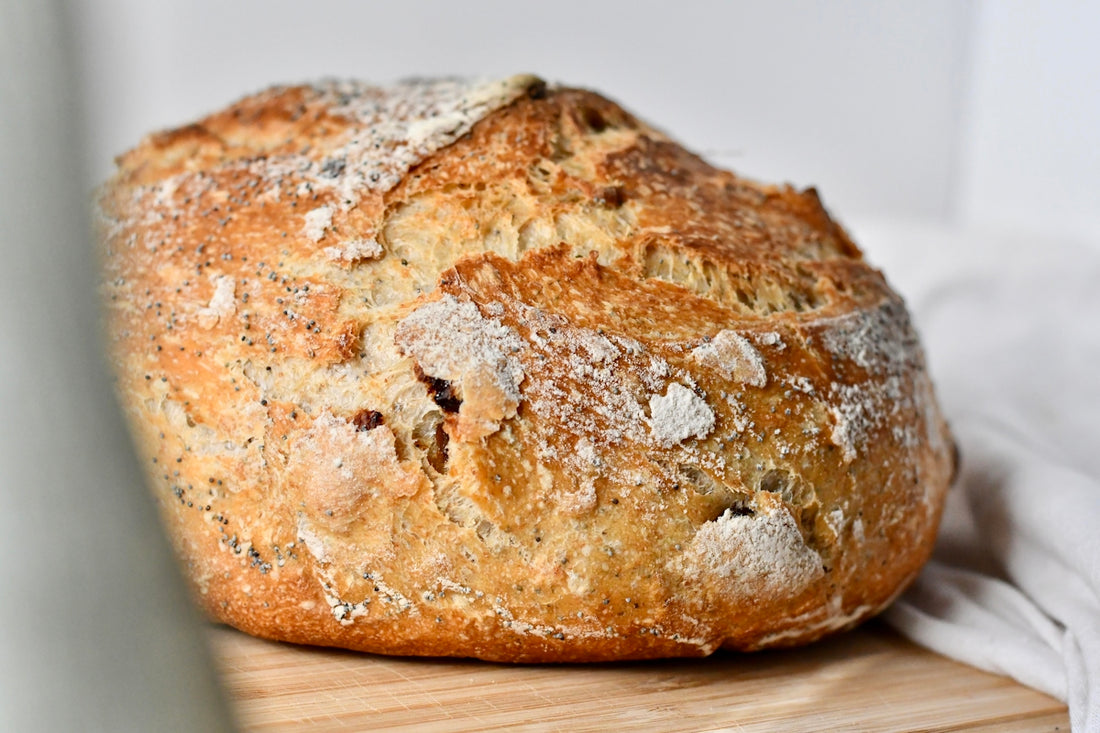
Complete Guide to the Best Organic Sourdough Starter Feeding Techniques
Have you ever wondered what separates a good loaf of sourdough bread from a truly great one? From the complexities of flavor to the quality of the crumb, much of it boils down to the sourdough starter and how it's fed. In this guide, we'll delve into the nuances and techniques of feeding an organic sourdough starter, ensuring you get the most out of your homemade sourdough efforts.
Welcome to My Sourdough Life, where we explore the magic behind the art of sourdough fermentation. Whether you're just beginning or looking to refine your skills, join us as we dive deep into sourdough baking tips, a complete feeding schedule, and troubleshooting techniques that will elevate your artisan bread baking game.
What Is a Sourdough Starter?
A sourdough starter is a natural culture of wild yeast fermentation and bacteria. It serves as the leaven for sourdough bread, eliminating the need for commercial yeast. Not only does this make the process more rewarding, but many argue that sourdough has superior gut-health benefits due to its longer fermentation process.
The Benefits of Sourdough Fermentation
- Gut Health: The natural lactobacilli in sourdough aid digestion and increase the absorption of minerals.
- Lower Glycemic Index: Sourdough is considered suitable for diabetics due to its lower glycemic index.
- Nutrient-Rich: Sourdough fermentation enhances the nutritional content by breaking down phytic acid.
Sourdough Starter Feeding Techniques
Basics of How to Feed a Sourdough Starter
Feeding your sourdough starter is crucial to maintaining its vigor and flavor profile. Each feeding refreshes and promotes the growth of wild yeast and bacteria.
Ingredients:
- 1/2 cup all-purpose or whole-grain flour
- 1/4 cup of water (room temperature)
Instructions:
- Discard: Start by removing half of the existing starter. This sourdough discard can be used for alternative recipes like pancakes or sourdough pizza dough.
- Feed: Add the measured flour and water to the remaining starter.
- Mix: Stir until the mixture is smooth. You can use a Danish dough whisk, a wonderful tool that simplifies the mixing process.
Consider trying the Nonna Bella Dehydrated Sourdough Starter for a taste of rich Tuscan heritage, offering a robust and flavorful start to your sourdough journey.
Organic Sourdough Starter Feeding Schedule
Maintaining a consistent sourdough starter feeding schedule is essential. Most bakers feed their starter every 12 hours, but this can vary based on the ambient temperature and specific bread recipe requirements.
- Warm Climates: Feed every 8-12 hours as fermentation speeds up.
- Cool Climates: Feed every 24 hours.
How to Store Sourdough Starter
Storing your sourdough starter correctly preserves its health and usability:
- Room Temperature: If baking frequently, keep it on the counter and feed regularly.
- Refrigeration: If using less often, refrigerate and feed weekly to bi-weekly.
For optimal storage and maintenance, a Sourdough Starter Kit will make the process seamless. The kit includes a container, spatula, and a thermometer to perfectly monitor your starter's condition.
Tips for Sourdough Baking
How to Shape Sourdough Bread
Proper shaping techniques improve the bread's structure and texture:
- Preshape: Gently round the dough without deflating.
- Rest: Allow the dough to rest for 20 minutes.
- Final Shape: Proceed with the final shaping appropriate for your pan or baking stone.
Utilizing a Professional Baking Tools Kit can simplify the process with tools like a pastry mat and scraper.
Best Sourdough Scoring Techniques
Scoring creates an appealing design and controls crust expansion. Use a sharp knife or a bread lamé, and score with purpose to direct the dough's rise.
Getting a Crispy Sourdough Crust
Achieving a crispy crust is an art:
- Steam: Introduce steam in the initial baking phase to enhance crustiness.
- Baking Stones: Utilize a Ceramic Pizza Stone to evenly distribute heat.
Sourdough Starter Troubleshooting
Even experienced bakers encounter challenges. Here's how to address some common issues:
- No Rise: Ensure your starter is fully active before use.
- Off-Smells: Regular feeding prevents undesirable odors.
- Streaky Texture: Overcome by ensuring a consistent feeding schedule and proper hydration.
Comparing Sourdough and Regular Bread
Sourdough bread differs from regular bread in both the taste and the baking process:
- Flavor: Sourdough offers a more complex flavor due to the extended fermentation.
- Digestibility: The long fermentation makes sourdough easier on the stomach compared to regular yeast breads.
Sourdough Recipes to Try
Unlock the full potential of your sourdough starter with these popular recipes:
- Easy Sourdough Bread: Perfect for beginners looking to master the basics.
- Sourdough Bagels: A chewy delight that highlights your starter's versatility.
- Sourdough Discard Recipes: From pancakes to crackers, there's no waste here.
Is Sourdough Starter with a Long Legacy Better?
In bread circles, the debate of old-vs-new starter legacies is ever-present. While a long legacy implies strength and flavor development, new starters can be equally successful with good feeding habits and care.
For a starter with a storied past, consider the Nonna Bella Dehydrated Sourdough Starter, renowned for its 19th-century Tuscan roots.
Tools for Making an Italian Sourdough Bread
To recreate authentic Italian sourdough bread, consider investing in proper gear. A Danish dough whisk is invaluable for mixing at various hydration levels. Ensure your arsenal includes:
- Dough Whisk: Artisan Blender
- Thermometer: For precise temperature control.
- Baking Stone: For even baking and crust perfection.
Visit Italian Sourdough and explore our curated collection to elevate your bread-baking endeavors. Whether you're crafting a simple loaf or artisan masterpieces, the right techniques and tools make all the difference.
By understanding the methods of feeding and maintaining an organic sourdough starter, you're better equipped to create exquisite sourdough bread at home. Happy baking!
